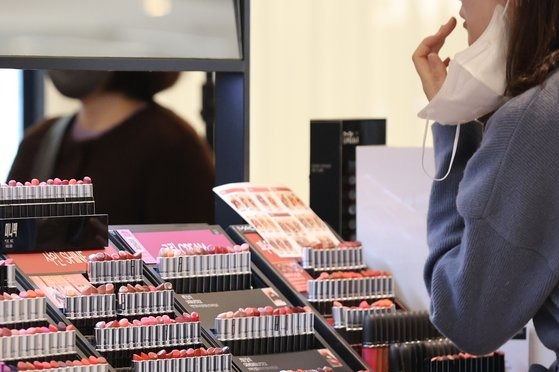Beauty markets in three NE Asian nations split into cheap, small luxury
Euromonitor says the alpha generation prefers inexpensive brands but luxury lipsticks and perfumes still reign
By Jul 07, 2023 (Gmt+09:00)
LG Chem to sell water filter business to Glenwood PE for $692 million


Kyobo Life poised to buy Japan’s SBI Group-owned savings bank


KT&G eyes overseas M&A after rejecting activist fund's offer


StockX in merger talks with Naver’s online reseller Kream


Mirae Asset to be named Korea Post’s core real estate fund operator



The beauty markets of South Korea, China and Japan are split into cost-effective products of under $10 and "small luxury" items like premium perfume and lipstick, according to a study.
Based on its findings in beauty trends in the three nations last year, the global market research company Euromonitor on Thursday said the first trait was the launch of cheaper private brand cosmetics driving the market by distribution companies amid soaring inflation.
A leading example in South Korea was discount retailer Daiso's launch of low-cost cosmetics. Popular domestic beauty brands such as Nature Republic and Clio in recent years have launched products in partnership with Daiso.
Daiso prices all of its products under 5,000 won ($3.82), a ceiling none of these cosmetics exceed. The Japanese convenience store chain Lawson and Chinese household goods company Miniso are also selling lower-priced items in the sector.
Euromonitor said the alpha generation born after 2010 is the main consumer group of this niche market for cost-effective cosmetics.
Yet the preference for luxury brands when buying lipstick, perfume and hand cream is growing. Among major Asian economies, South Korea's small luxury market has seen a strong increase, with its scale rising 26% from 2021 to $567 million (KRW 730 billion).
Japan's went up 20% to $433 million (560 billion won) while China's decreased 13% to $20.4 trillion (26.6 trillion won).
Another major trend Euromonitor mentioned was a new phase facing each of the three markets. K-Beauty companies rebranded to enter new markets like the US, India and Europe, while those of Japan were shifting from makers of simple functional cosmetics to beauty tech brands.
The report added that the Chinese beauty sector, which has a strong public image, seeks to go premium.
Write to Ji-Yoon Yang at yang@hankyung.com
-
 Beauty & CosmeticsS.Korea's beauty platform Hwahae opens flagship store on TikTok
Beauty & CosmeticsS.Korea's beauty platform Hwahae opens flagship store on TikTokJun 30, 2023 (Gmt+09:00)
1 Min read -
 Beauty & CosmeticsHeyday over for Amorepacific, LG Household in China’s beauty market
Beauty & CosmeticsHeyday over for Amorepacific, LG Household in China’s beauty marketJun 26, 2023 (Gmt+09:00)
3 Min read -
 Beauty & CosmeticsS.Korean beauty brands lean toward social media stars
Beauty & CosmeticsS.Korean beauty brands lean toward social media starsJun 05, 2023 (Gmt+09:00)
2 Min read -
 Beauty & CosmeticsS.Korea’s beauty brand Laneige enters UK, Middle East market
Beauty & CosmeticsS.Korea’s beauty brand Laneige enters UK, Middle East marketMay 09, 2023 (Gmt+09:00)
1 Min read -
 Beauty & CosmeticsCJ Olive Young introduces Beauty Box filled with K-beauty products
Beauty & CosmeticsCJ Olive Young introduces Beauty Box filled with K-beauty productsApr 06, 2023 (Gmt+09:00)
1 Min read -
 Beauty & CosmeticsOlive Young exports K-beauty products to Middle East
Beauty & CosmeticsOlive Young exports K-beauty products to Middle EastFeb 13, 2023 (Gmt+09:00)
1 Min read


